 Expat Corner
Expat Corner

Anyone who has seen the photography book Hà Nội 1967-1975 by German photographer Thomas Billhardt can see the true emotions of Hà Nội.
Trần Hoàng Nam
Anyone who has seen the photography book Hà Nội 1967-1975 by German photographer Thomas Billhardt can see the true emotions of Hà Nội.
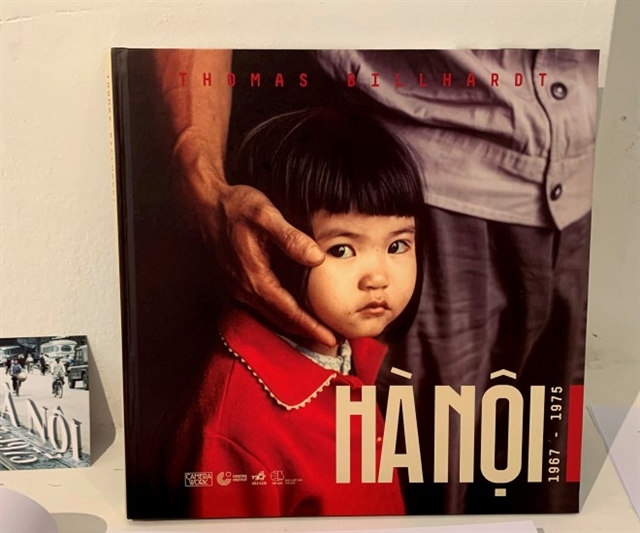
|
| Cover of the photobook titled Hà Nội 1967-1975 by Thomas Billhardt. — Photo thethaovanhoa.vn |
Writer Đỗ Phấn noted: "Traces of wartime were featured peacefully, gently and romantically through the lenses of the German photographer… Of course, there are also painful moments."
When he first came to Việt Nam in 1967, Billhardt considered it a big moment in his life and the first time he truly understood the role of a photojournalist.

|
| Thomas Billhardt when he came to Việt Nam for the first time. — Photo thethaovanhoa.vn |
“At that time, Billhardt was well aware that was not a trip to take photos or to gather materials, he would also have to stand up for rights,” said Wilfried Eckstein, director of Goethe Institute in Hà Nội.
“Billhardt set out his duty of not only bringing back photos but also things that his heart received in Việt Nam.”
The photos Billhardt took in Việt Nam of the destruction of the war awakened many people in Europe to the grim reality, Eckstein said.
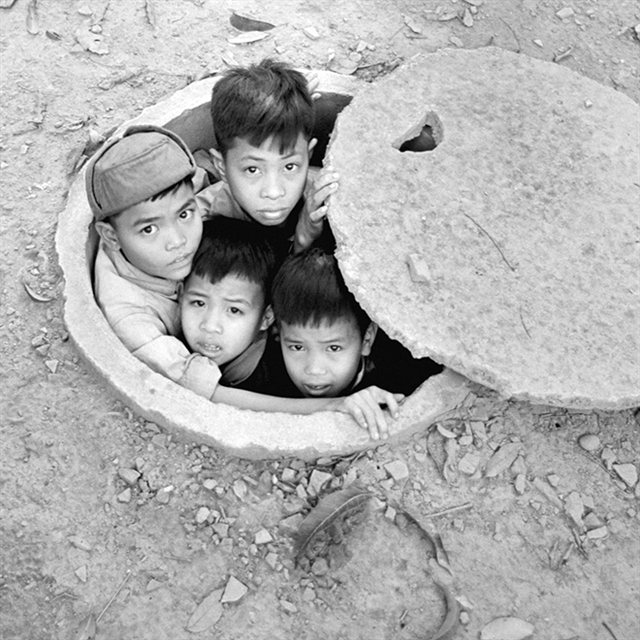
|
| A photo in the book featuring some children seeking shelter from American bombing in a street. — Photo Thomas Billhardt |
Photographer with heart
Trần Ngọc Quyên, a former Charge d’ Affaires of the Vietnamese Embassy in Germany, said Billhardt was a person with a deep love for the Vietnamese country and people.
Quyên said he met the photographer at the Vietnamese Film Week in Berlin in 2000 when Billhardt came to the launching ceremony of the German's documentary Iced Lemonade for Hồng Lý.
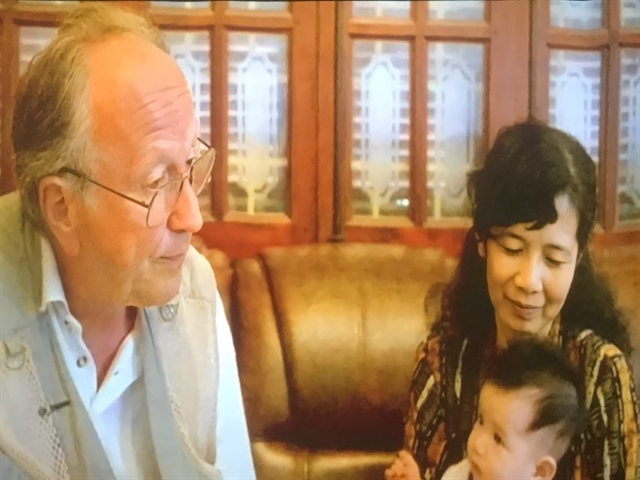
|
| Billhardt meets former young volunteer Hồng Lý. — Photo thethaovanhoa.vn |
In one of his trips to Việt Nam, Billhardt came to the central province of Quảng Bình, where he met a female volunteer soldier named Hồng Lý.
He asked the volunteer about her desire when the war ended. Lý replied: "I just want to visit Hà Nội and have a glass of lemonade."
Inspired by the answer, Billhardt made a documentary on her.
“Billhardt had so much feeling for his characters,” Quyên recalled.
In 1999, Billhardt decided to search for characters in the photos he took during the war. He worked with the Ministry of Culture, Sports and Tourism to host an exhibition of 40 big photos at Đông Kinh Nghĩa Thục Square in downtown Hà Nội.
Quyên said Billhardt then told him many people came to see the photos, where some of them saw their neighbours and friends. Many of them came to see Billhardt. Some of those he photographed worked as businessmen and army officers but all had stable lives after the war.
Whenever he had the chance to visit Việt Nam, Billhardt would visit or send regards to those he had photographed, Quyên said.
Among his thousands of photos taken in Việt Nam, Billhardt was struck most by the image of a grandmother crying by her nephew’s corpse he took in October 1972. The boy died after a bombing run by the Americans.

|
| A photo featuring a grandma cried by her grandchild's corpse. He died in the last bombing by Americans in Hà Nội. — Photo Thomas Billhardt |
“I don’t want to take photos of the dead or destructions in the war to be famous then,” Billhardt recalled. “But I cannot do anything else but take photos. I cried at that time. I talked to the grandmother. She did not understand what I said. I told her that I will publish the photo millions of times to let the whole world know about the war in Việt Nam."
"In 1999, when I displayed the photo at Đông Kinh Nghĩa Thục Square in Hà Nội, a man full of emotions in his face came to meet me. Thanks to my interpreter, I knew that he was the father of the dead boy," Billhardt said.
The man invited Billhardt to his house, where he had displayed the same photo he had cut from a German magazine that a friend sent him from Germany.
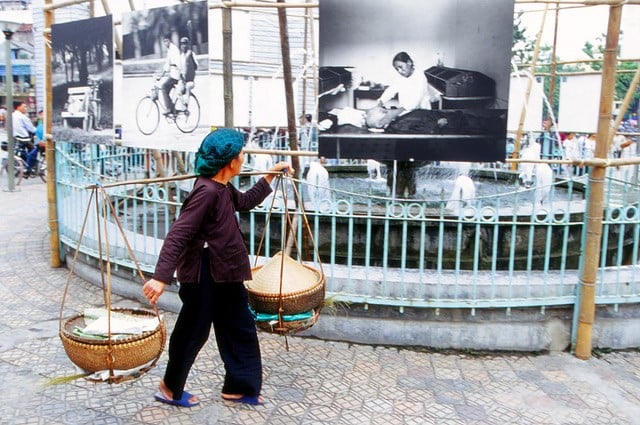
|
| His photos have been exhibited in downtown Hà Nội. — Photo thethaovanhoa.vn |
“My duty now is to continue to display photos on Việt Nam,” Billhardt said. “I hope more audience will see my old and new photos on Việt Nam, understand Việt Nam and love Việt Nam like me. I have met warm and hard-working Vietnamese people. I want to spread my impression to the whole world.”
Born in Germany in 1937 into a family working in photography, his childhood memories include the chemical smell of the film developing process. His mother worked as a freelance photographer and ran a private studio. At 14, he was taught to take photos.
He studied a BA on photography and photo design from Leipzig Visual Arts College before working as a freelance photographer in state-owned agencies in the former Democratic Republic of Germany, news agencies and UNICEF.
Billhardt has travelled to Bangladesh, China, Chile, Guinea, Indonesia, Cambodia, Lebanon, Mozambique, Nicaragua, the Philippines and the former USSR.
“I experienced the joys and sorrows of people from gas mines in the USSR and battles in Việt Nam,” he said.
Billhardt came to Hà Nội for the first time in 1967 after stopping in Moscow, Irkutsk, Beijing and Nanning, when he worked as a freelancer for Heynowski & Scheumann Independent Documentary Studio.
The trip was to gather materials for a documentary on American pilot prisoners captured in North Việt Nam. The photos he took on the trip appeared throughout the world in Life magazine (the US), Paris Match newspaper (France), Stern and Spiegel magazines (Germany) and other magazines.
His first photobook on Việt Nam was published in 1973 in Leipzig. Between 1962 and 1975, Billhardt visited Việt Nam six times and then he returned six more times. The photos he took during the trips were published in four books: Pilots in Pajamas (in 1968), Desire for Peace: Việt Nam (1973), Hà Nội – Days before the Peace (1973) and Vietnamese Faces (1978).
Since 1999, photos by Billhardt have been showcased at the Camera Work Photo gallery in Berlin and many exhibitions around the world. — VNS
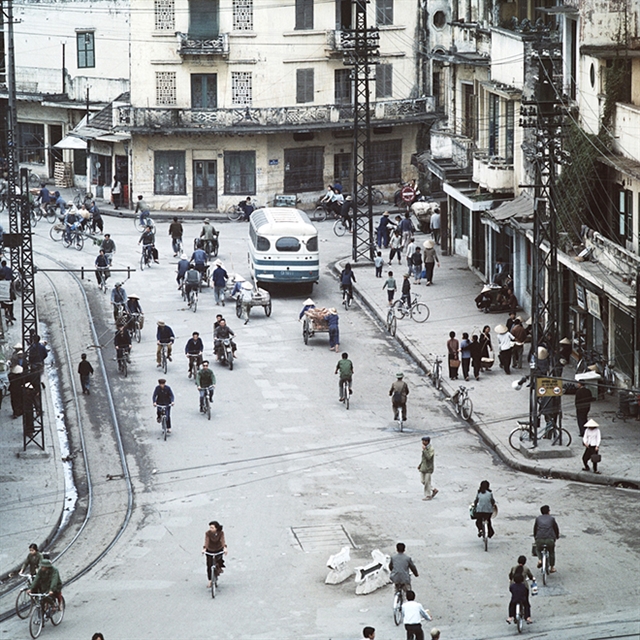
|
| Hà Nội's streets in 1975 by Thomas Billhardt |




